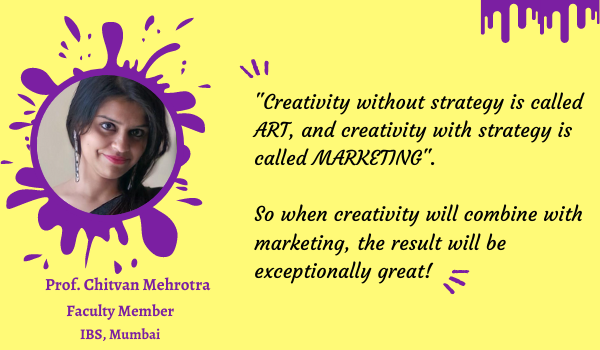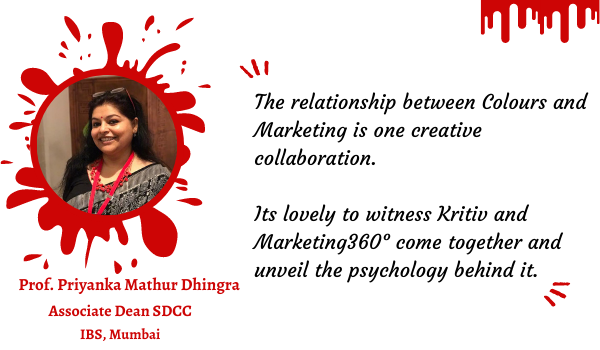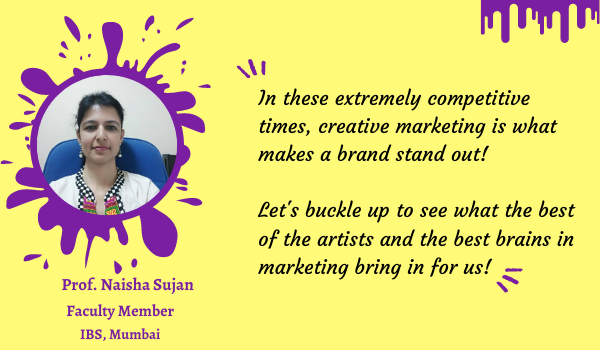
In Collaboration With

Presents
Effect of Colour Psychology on Brands and Art Forms



Effect of Colour Psychology on Brands and Art Forms

Key Takeaways
- Colour plays a key role in a logo’s aesthetic appeal and portrays the face of a brand’s face.
- An appropriate colour can be chosen in various ways which positively impacts a consumer’s decision.
- Colours not only have visual impacts but can also create beautiful artwork in various forms by utilizing the brand’s best products.
- Learning about various marketing strategies implemented by companies supplying art products.
Colours are a powerful tool when used correctly and can paint vivid fantasies in the minds of many. The effect of colour psychology is observed on the mental and emotional aspects of an individual. It aids in the formation of relationships with individuals at various stages of their lives. There are certain components that are very subjective, as well as those that are universally recognized and verified.
Colours have a connection with people in all phases of their life. There are some very subjective pieces as well as some widely accepted and proven elements. In the world of content marketing, colour is an emotional cue that helps you stand out. It enables your audience to see, feel, and act in the way you want them to. Understanding the effect of colour psychology on the effectiveness of a brand’s content is critical for its success. If you approach it with a strategic mindset, there are several advantages; but, if your colour selection is poor, it may have a detrimental influence on your message. This is what makes understanding the effect of colour psychology so important for the success of a brand’s content.
Have you ever noticed how certain places appeal to you while others disgust you? The Effect of colour psychology is at work here, to be certain. colour plays an important role in influencing the thinking and behavioral patterns of people. Colour directs our eye on where to look, what to do, and how to interpret something. It helps to decide what’s more prominent and that being a reason, one should precisely understand the meaning of colours along with their effect.
Marketing and advertising industry highly utilizes colour psychology to affect their consumers. The fact that some companies have heavily invested during research to show a belief in the concepts of the effect of colour psychology to implement them in their advertising. Colour influences and plans to make people hungry, associate a positive or negative tone and encourage trust, feelings of calmness or energy, and countless other ways.
As each organization has its own goal and motives for using various colours in its content or advertisements, there may be numerous approaches to determine which strategy or colour combinations would work best for it. Each company’s colour strategy may have a distinct impact; following are the ways that can help you make the right choice.
1. Choosing appropriate colour
It was found as per the analysis that, the relationship between brands and colours depends on the appropriateness of the colour being used for the particular brand product to be sold. Predicting consumer reaction to the colour chosen is highly important for its accurate appropriateness. So, it’s the amalgamation of consumer feedback and personal analysis for the colour of selling products.
2. Colour portraits a brand’s personality
Customers are influenced by colour choices to determine brand’s personality, and how they perceive colours has a significant impact on their purchasing intent. For instance, aligning to the specific traits of colour (e.g., white with peace) will not provide the best results as it is utterly important for colours to portray the personality a brand desires.
3. Right colour appeals to your target audience
Joe Hallock’s work on “colour Assignment” results in certain clear colour preferences in gender, but it also has a western cultural impact that can influence individual preferences.
Studies showed that when it comes to shades, tints, and hues, men generally prefer bold colours with shades of black, while women prefer softer colours with a hint of white shades. This being a debated issue, brands can escape stereotypical perspectives in colour theory which can lead them to a reward, and this can lead them to a reward as they are thinking out of the box.
![[Alt text - 5 Dimensions of Brand Personality - This points out five core dimensions that play a role in a brand’s personality.]](https://www.marketing360.in/wp-content/uploads/2021/10/brasnd-personality.jpg)
4. Right colour differentiates brand identity
Studies suggest that it’s important for new brands to pick colours that ensure differentiation from entrenched competitors as the right colour chosen for the brand will make it stand out amidst its competitors. The brand that stands out is more likely to be remembered by the audience and this is known as the “Isolation Effect” and hence the brand or product is recognized quickly, unregarding any form like text, image, etc.
Studies on aesthetic response and consumer preferences resulted that a majority of consumers prefer colour patterns with similar hues, and they also favor palettes with a highly contrasting accent colour. In terms of colour coordination, a visual structure is created consisting of base analogous colours and contrasting them with accent complementary or tertiary colours.

This concept has a key role in marketing, too. Another way to think of it is by utilizing background, base, and accent colours so a hierarchy can be created that leads the customers to take action encouraged by colour.
Effect of Colours on Consumers
By using colour schemes that don’t clash or overwhelm your customers, the brand can increase the prospect that they’re going to like your brand and buy from you. Consumers will decide on purchase by making a judgment within 90 seconds of entering the store, with the colour impacting 62-90% of the impression. colour affects consumer behavior in several ways, from budget-friendly investments to impulse purchases. And while there are great opportunities to convert a customer to the consumer in this transitional period, the impact of colour on marketing can have a good deeper effect on brand-customer relationships. While advertising a brand, colour is an important part of it because in the UK, we associate red with either danger or passion but in Asia, it is perceived as a lucky colour.
The Logo Colour Tricks
A logo is the face of a brand and its colour says a lot about that brand. For well-established brands, a colour can be linked to the firm’s personality. Let’s take an example of Starbucks, its famous white and green coffee cups stand out among its competitors. Cadbury’s iconic purple wrapping is recognized by the colour itself. When it comes to new brands, their logo colour is an attempt to position their business for their target audience.
Logos are created for visual recalling.
![[ Alt txt - colour wheel - It shows the big brands using colours for logos]](https://www.marketing360.in/wp-content/uploads/2021/10/logo-wheel.png)
It is concluded from surveys that blue colour is used in over 75% of credit card brand logos, and 20% of fast-food brand logos. While on the other hand, red colour is found in over 60% of retail brands. Observing the Fortune 500 companies, it is analyzed that Blue is by far the most popular choice of logo colour. The reason for this choice is, blue being an inoffensive colour, a safe but sophisticated hue. So, for the brands falling under Finance, Tech, Health, or Insurance, blue does an admirable job.
As we talk about Red, it appeals for bold choices and is also the second most popular choice. As Red colour is more appealing for the decision of consumers, a clear link for choosing it can be connected well between the Food and Retail industries as their logo colour. Whereas Purple colour pops up more for the food industry. Colour Psychology is the initial element to interact with the audience to convey the message behind visual aspects like the Logo and Name of the brand. colour schemes when used appropriately can attract the Niche target audience and events reflect the overall business strategy.
The relationship between colours can be shown through the use of various art forms. The art forms link all the elements of colours, their combinations, and results in a beautiful masterpiece. Let us have a look at the brands providing their best products using various art forms.
Different Art forms were created by using products of the following brands:
- Kokuyo Camlin Limited –
Painting Distemper paint, often known as poster paint, is an old style of paint that employs gum – water, chalk, starch, pigment, cellulose, or another adhesive size as a binder.
![[ Alt text - painting using poster colours]](https://www.marketing360.in/wp-content/uploads/2021/10/1.png)
- Staedtler – Sketching
Sketching – Sketching is the most inexpensive art medium. It’s usually used to describe graphic work done with a dry medium like silverpoint, graphite, pencil, charcoal, or colour pencil.
![[ Alt text - sketching using pencil colours ]](https://www.marketing360.in/wp-content/uploads/2021/10/2.png)
![[ Alt text - sketching using pencil colours ]](https://www.marketing360.in/wp-content/uploads/2021/10/3.png)
- BRUSTRO – calligraphy, mandala.
Calligraphy – is a form of visual art that is linked to writing. It’s the art of lettering with a pen, ink brush, or brush pens (brush pens have a flexible nib that lets you create thin and thick strokes depending on how much pressure you apply to your motion).
Mandala – A mandala is made up of five main elements: symmetry, geometry, colour, number, and intention. An art piece is formed by becoming aware of certain characteristics and consciously integrating them.
![[ Alt text - calligraphy using brush pens and mandala using fine-liner pens]](https://www.marketing360.in/wp-content/uploads/2021/10/4.png)
![[ Alt text - calligraphy using brush pens and mandala using fine-liner pens]](https://www.marketing360.in/wp-content/uploads/2021/10/5.png)
![[ Alt text - calligraphy using brush pens and mandala using fine-liner pens]](https://www.marketing360.in/wp-content/uploads/2021/10/6.png)
![[ Alt text - calligraphy using brush pens and mandala using fine-liner pens]](https://www.marketing360.in/wp-content/uploads/2021/10/7.png)
- Faber-Castell – Doodle, Children use – colouring/Clay Products.
Crayons – A crayon (or wax pastel) is a stick of pigmented wax used for writing or drawing. Here the pigment is mixed with a dry binder such as gum arabic.
Sketch pens – A sketch pen is a pen with a sponge tip. These pens became increasingly popular through the 1950s and were used to create labels, letters and posters.
Modelling clay – The most easily recognized form of sculpting is clay modelling, that is, the creation of a 3-dimensional piece of art typically using clay. Modelling clay is a flexible material that can be molded in a variety of ways and maybe very long-lasting, in the case of hardening clays.
- Pidilite – Fevicol – craft, trick
Origami – the Japanese art of folding paper into decorative shapes and figures or creating something useful from the waste product by using glue as a joining medium.
![[ Alt txt -products like crayons, sketch pen and modelling clay]](https://www.marketing360.in/wp-content/uploads/2021/10/8.png)
![[ Alt txt -products like crayons, sketch pen and modelling clay]](https://www.marketing360.in/wp-content/uploads/2021/10/9.png)
![[ Alt txt -products like crayons, sketch pen and modelling clay]](https://www.marketing360.in/wp-content/uploads/2021/10/10.png)
Best Products Provided by Brands
- Kokuyo Camlin Limited – poster colours
- Staedtler – pencil colours
- Brustro – brush pens & mandala pens
- Faber-Castell – sketch pen, crayons
- Pidilite – Fevicol
Marketing Tactics Performed by the Brands
1. Kokuyo Camlin Limited
Being the oldest player, leads them to be the first movers in almost every category and have dominated those categories except a few like notebooks. For this category as well they came up partnering with Japan’s oldest stationery brand that has their forte is notebooks, Kokuyo.
Talking about advertisement allocation, it spends about 60 % on TV, 30% on digital, and about 10 % on BTL activities, including school newspapers. On television, the kids’ genre plays a very important role as their target audience is children. However, teachers and parents are also advertised through GECs and news.
2. Staedtler
Staedtler marketing strategies are ideal for kids. When one looks at the advertisement of the markers, it shows some kids with the markers, and they were having fun colouring. The feeling of markers being very good for use was portrayed through their advertisements.
Because every colour has a story to tell, so Stadtler created the #MycolourStory campaign to market the expressive palette of STAEDTLER’s triplus pen range. A positive impact through colour psychology. With the fun aspects of colour psychology to tell the story of each colour was given a platform with a clever twist of recognizable reality by targeting teenagers and young adults who have a passion for creativity.
3. Brustro
Importing from foreign countries like the USA, UK, Italy, Germany, France, Austria, and other parts of the world too, it has a strong customer-focused approach which continuously quenches the enthusiasm of artists. Directed towards supplying materials, it has become a leading name in the line of business. The company’s established order is maintained by a good marketing and distribution network, enabling it to create a reputation of strong customer support.
A registered brand of Creative Hands – Brustro, a Creative Hands registered trademark, is happy to have become the people’s choice because they give the highest quality at cheap prices for artists, hobbyists, students, and amateurs.
It encompasses a good range of canvases, papers, easels, brushes, and a spread of accessories to enrich its range of artists’ products.
4. Faber-Castell
A video showcasing their line of coloured pencils is displayed for the process behind the pencils. In addition to these showboating ads, Faber-Castell also promotes works created with their products through their social media pages, where the artwork by consumers is shared, retweeted, and posted.
Engagement activities like this result in word-of-mouth advertisement and leave a positive brand image among their consumers. Such kind of endorsement of company image by consumers establishes healthy public relations, as customers feel involved with the company.
![[ Alt txt -using white glue to create craft/origami]](https://www.marketing360.in/wp-content/uploads/2021/10/15.png)
5. Pidilite
Pidilite has opted for Market Specialization for its target audience for Fevicol and its associated product categories. Fevicol has a forte in the adhesives market and enjoys its monopoly. Their quality is their USP amidst its competitors.
It has a loyal customer base who don’t mind paying a little higher than local products because the adhesive is such an important yet economically insignificant investment for them. Fevicol uses geographical and demographic segmentation strategies along with mass targeting strategy since most of the offerings are by and large targeted to the masses.
And finally let’s not forget the Innovative Advertisement Campaign and slogan used which is “Fevicol ka mazboot jod hai, tootega nahi.”
Adopting the appropriate strategy for colour will not only affect the psychology of consumers but will also create an impression of the brand’s logo in the minds of their audience. With the colours having multiple outcomes, brands choose the colour of the logo that is most suitable to their product and image. colours are also represented through various art forms and creative product usage. Brands use effective tools and tactics to market their products for their creative target audience.
What do the Creators have to say about our collaboration with Kritiv ?








